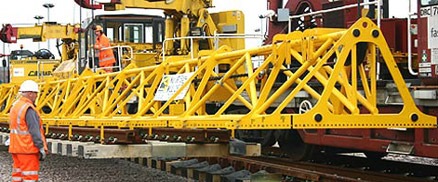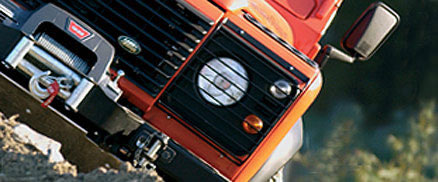January 21st, 2011
Toe jacks are sometimes equipped with adjustable feet to allow for settlement in smaller places. The fingers of the shots of the feet can be lowered and raised at the same time, using a specific level control. The first is a hydraulic jack toe, which is the based on the automated system. The other is manual, making to the feet. High capacity of shots of the feet are equipped with thin fingers are the most popular today as they get much easier than before.
This new development of a toe making is important, especially in conditions that require precision and accuracy. Toe jacks are specialised to access different types of lifting. Toe jacks can work both the ways, either alone or in coordination with other toe jacks. The main usage of hydraulic toe jacks is to give small lifts so that enough space is created to allow clearance of other moving items. However when different toe jacks are pipelined they can have parallel movements. Multiple toe jacks can move at the same rate of speed and at the same time when controlling them manually. The toe jacks can also be equipped with standard grip free hosing to provide user safety. Pipelined toe jacks can also have an option of doing harmonised work with the aid of an external pump which can control all the “toe jacks” alone through the coupling technique.
The usage and the type of load to be lifted are based upon the choice of the toe jack used. A Ratchet toe jack is used when you want to lift lighter masses up to 5-15 tonnes. This toe jack is manually controlled which is usually placed in an upright position but the height can vary through the adjustable knob. It is also light weight when compared to the other kinds of toe jacks. If the mass exceeds 15 tonnes then a bottleneck toe jack is the ideal choice. However heavier masses are lifted through a compact toe jack.
Posted in Arbil Lifting Gear |
January 21st, 2011
Most winches use hydraulic or electrical power. The hydraulic winch has numerous advantages over those that use electrical power. Some of these advantages include weight, power, and safety. Below are the advantages of using a hydraulic winch.
Overheating
One of the first advantages of a hydraulic winch is overheating. An electric winch will overheat if you use it too long, and you will have to let it cool down for a while before using it again. It may also get too hot for you to touch. A hydraulic winch will never overheat. It will continuously pull for however long you need it.
Battery
Electric winches will only work while the batteries are charged. This type of winch can easily drain your battery in less than a minute, so you would need to have a very strong battery. A hydraulic winch doesn’t rely on your battery power. Therefore, you never have to worry about being stranded because your battery has been drained.
Weight
Another advantage of a hydraulic winch is the weight. Winches have to be very strong to do their job, and this usually causes them to weigh a lot. Too much weight can put more strain on your front axle and front springs. You don’t have to worry about this with a hydraulic winch because they weigh less than an electric one.
Power
Pulling power is also an advantage of a hydraulic winch. Those powered by electricity have a tendency to become bogged down while under heavy loads. A hydraulic winch usually has more pulling power than electric winches. The hydraulic type of winch will provide a constant pull no matter how much weight it has to pull.
Safety
One of the final advantages of a hydraulic winch is safety. An electric motor may stall and cause too much pressure to be put on the wire rope which is very dangerous. A hydraulic winch will never stall so you don’t have to worry about over torque.
These are some of the advantages of using a hydraulic winch over one that uses electrical power. The hydraulic variety will never overheat, so you can use it as long as you need it. The hydraulic winch also won’t drain your battery or put too much strain on your front axle and springs. These winches also have more pulling power and will provide a constant pull no matter how much weight it’s pulling.
Posted in Arbil 4x4 |
January 21st, 2011
When working at height, particularly with overhead lines, safety must be paramount. The correct health and safety equipment needs to be used and this includes safety harnesses and lanyards. However, like with most things lanyards will suffer wear and tear and become deemed no longer safe to use.
The following defects and damage have the potential to result in the degradation and/or weakening of the lanyard:
- cuts of 1 mm or more at the edges of webbing lanyards (eg where the lanyard may have been choke-hitched around steelwork);
- surface abrasion across the face of the webbing and at the webbing loops, particularly if localised
- abrasion at the edges, particularly if localised
- damage to stitching (eg cuts or abrasion)
- a knot in the lanyard, other than those intended by the manufacturer;
- chemical attack which can result in local weakening and softening – often indicated by flaking of the surface. There may also be a change to the colour of the fibres
- heat or friction damage indicated by fibres with a glazed appearance which may feel harder than surrounding fibres;
- UV-degradation which is difficult to identify, particularly visually, but there may be some loss of colour (if dyed) and a powdery surface;
- partially deployed energy absorber (eg short pull-out of tear webbing);
- contamination (eg with dirt, grit, sand etc) which may result in internal or external abrasion;
- damaged or deformed fittings (eg karabiners, screwlink connectors, scaffold hooks);
- damage to the sheath and core of a kernmantel rope (eg rucking of the core detected during tactile inspection);
- internal damage to a cable-laid rope.
Posted in Arbil Rail |


